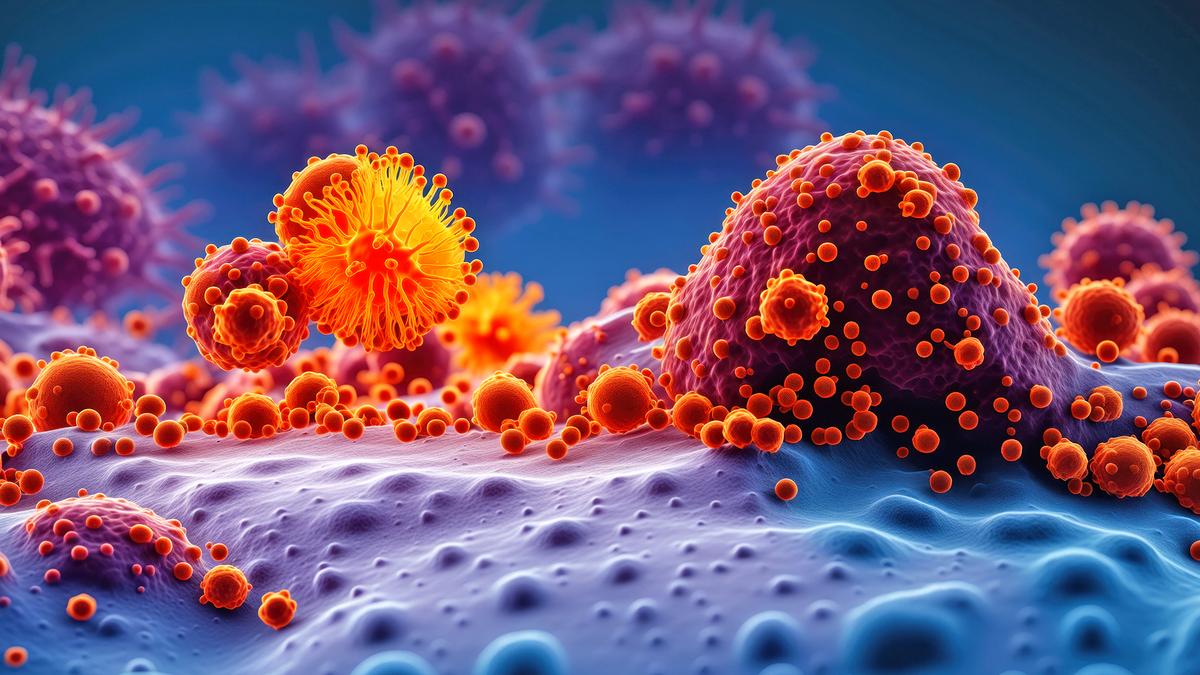Mapping India’s cancer burden: Explained Premium


Mapping India’s cancer burden: Explained Premium
Cancer cases are rising at an alarming rate, and without doubt, cancer has emerged as a matter of public health concern. In 2020, it was estimated that there were 1.39 million cancer cases in India, as per an Indian Council for Medical Research (ICMR) report. Hospitals are seeing more patients with cancers affecting the lungs, breast, cervix, and colon than ever before. Paediatric cancers alone constitute 4% of total cancer cases, and recently, the Cancer Institute, WIA, in Adyar, Chennai, documented a separate registry for this. But how does India keep track of these numbers? How do researchers, policymakers, and doctors understand cancer patterns, assess risk factors, and develop better treatments? Here is where cancer registries come in.
A cancer registry is a system that collects, organises, and analyses data on cancer patients. It helps understand how cancer affects different groups, what treatments work best, and how survival rates change over time. However, in India, cancer is not a notifiable disease, meaning that doctors and hospitals are not legally required to report every cancer case to health authorities.
The cancer registry records demographic details, including the patient’s name, age, gender, marital status, address, occupation, lifestyle habits (tobacco, alcohol), family history, and socio-economic background. Under cancer identification, it captures the primary site, tumour type, method of diagnosis (biopsy, imaging, pathology), tumour grade, size, and multiplicity. The staging section includes Tumour Node Metastasis (TNM) classification, spread to lymph nodes, and the presence of metastasis at diagnosis. The treatment section documents the first course of treatment—whether surgery, chemotherapy, radiation, immunotherapy, or hormonal therapy—along with start dates, dosage, and response to treatment. Follow-up data tracks recurrence, additional therapies, survival status, and cause of death if applicable. By compiling this detailed information, cancer registries provide crucial insights for improving early detection, survival rates, and healthcare policies, forming the backbone of effective cancer control programmes.
A cancer registry is like a vast library of cancer cases. There are two main types of cancer registries in India: hospital-based cancer registries (HBCRs) and population-based registries (PBCRs). Hospital-based cancer registries focus on patients treated in a particular hospital. They track the type of cancer, treatment given, and survival outcomes. This helps doctors improve patient care by analyzing which treatments are most effective. However, because they only record cases from one hospital, they may not reflect the larger cancer burden in an area. Population-based cancer registries, on the other hand, collect data from multiple hospitals, pathology labs, and healthcare centres within a specific region. They provide a complete picture of how common different cancers are, in a given population, what environmental and lifestyle factors contribute to cancer risk, and how well early detection programmes work.
The earliest attempt at a population-based cancer registry emerged in Hamburg in 1926, followed by the Connecticut tumour registry in 1941 and Denmark’s registry in 1942. Since then, cancer registration has expanded in a scattered, often uncoordinated manner, shaped by national policies, local governments, and research institutions, covering just 21% of the global population.
India’s National Cancer Registry Programme (NCRP) was established in 1982 under ICMR to collect cancer data systematically. Initially, only a handful of registries existed, mainly in major cities like Mumbai, Bangalore, and Chennai. Over time, as the importance of data collection became evident, more registries were set up across the country. Over the years, these have expanded to include 38 population-based registries and 269 hospital-based registries.
One of the breakthroughs in cancer registration came with expanding population-based registries to smaller cities and rural areas. It helped to understand how lifestyle, pollution, diet, and genetic factors contribute to cancer risks across different regions of India. For example, data from northeastern states like Mizoram and Assam revealed a significantly higher incidence of oesophageal and stomach cancers, likely linked to dietary habits and tobacco use.
Unlike infectious diseases, cancer does not spread from person to person. It does not require immediate public health intervention to prevent outbreaks. Hence, it is not classified as a notifiable disease in India. Notifiable diseases, such as tuberculosis, dengue, or COVID-19, are those that doctors are legally required to report to health authorities because they pose an immediate threat to public health. This is why tracking cancer depends largely on voluntary data collection through cancer registries. Digital health records could help in improving cancer surveillance without the need for mandatory reporting.
Cancer registries help understand how cancer behaves in different groups of people. They help identify the most common cancers, time trends, and how survival rates change. They also help in designing effective public health strategies.
Cancer registry data in India has revealed that oral cancer is one of the most common cancers in men, strongly linked to tobacco and betel nut chewing. This led to stronger anti-tobacco campaigns and stricter regulations on tobacco sales.
Another major use of cancer registries is improving early detection and treatment. Suppose a registry shows that most cases of a particular cancer are diagnosed late. In that case, it indicates that screening programmes need improvement. This was seen in breast cancer cases, where data from registries showed that many women were diagnosed at an advanced stage, leading to greater awareness campaigns about self-examinations and mammography.
For researchers and pharmaceutical companies, cancer registries provide valuable data for clinical trials and drug development. Scientists can develop better, more targeted cancer therapies by studying treatment patterns and patient responses over time. At a hospital level, registries help doctors assess which treatments work best for different types of cancer. Registries also allow hospitals to keep track of patient follow-ups, ensuring better post-treatment care.
(Dr. C. Aravinda is an academic and public health physician. The views expressed are personal. aravindaaiimsjr10@hotmail.com)










